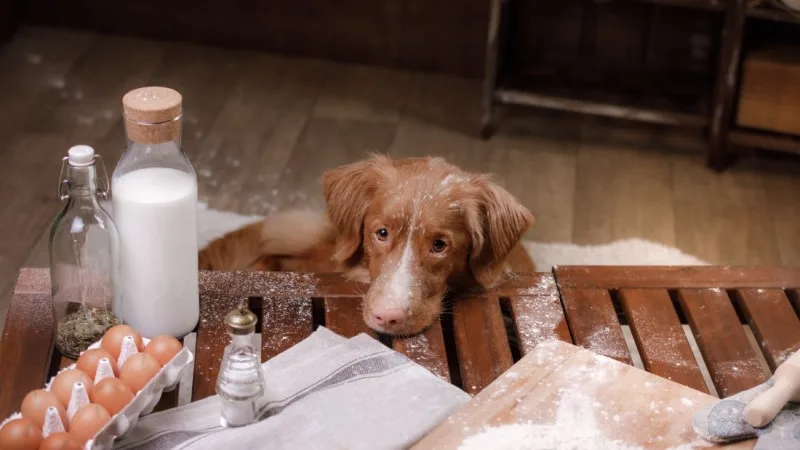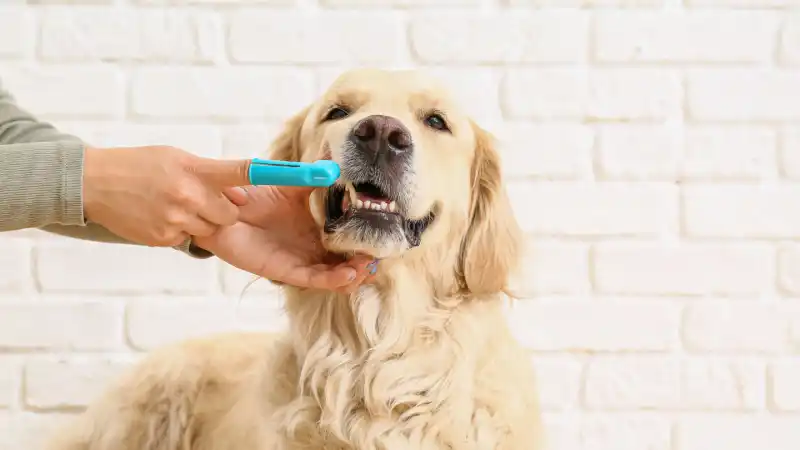Pet Poison Prevention Month: 6 Tips to Keep Your Pet Safe
March is Pet Poison Prevention Awareness Month. Here are 6 ways to ensure that your pet is protected from common household dangers like plants, foods, and medicine.

When most people talk about poison prevention, their mind likely jumps to child safety locks and keeping children safe from ingesting medications and potentially dangerous substances. Pets, however, are also in danger of ingesting poisonous materials without proper precautions.
March is Pet Poison Prevention Awareness Month, and it's the perfect time to brush up on common household dangers and how you can keep your pet safe. Keep reading for our top tips to help keep your pet safe this month and beyond.
How to Prevent Poisoning
As a pet owner, keeping your furry family members safe is a top priority. But while you may have the best intentions, some common household items could be putting your pet at risk without you even knowing it.
A few common household dangers for pets include:
Prescription or over-the-counter medications like NSAIDs, acetaminophen, and antidepressants
Xylitol and other artificial sweeteners
Alcohol
Caffeine
Grapes and raisins
Garlic, onions, and other alliums
Tobacco products
Plants and flowers like lilies, tulips, and daffodils
Fertilizers and chemical cleaners
Pest control products like rat poisons
Poison Prevention Month is a great opportunity to take inventory of your home and what potential dangers are within your pet's reach.
6 Poison Prevention Tips to Keep Your Pets Safe
Here are six tips to help you keep your pet safe from accidental poisoning:
1. Pet-Proof Your Home
The first step to keeping your pet safe is removing or hiding any items around your home that can be harmful.
Always keep animal or human medications locked away in a cabinet where your pet can't reach them, as well as any cleaning supplies. For particularly curious pets, you may consider adding child locks to your cabinet doors.
Double-check all of the plants around your home to ensure they're pet-friendly and move any toxic plants to areas of the house where your pets can't reach them. If you plan to do any gardening or yard work, keep all fertilizers and outdoor chemicals locked up inside a garage or storage shed, and monitor your pet at all times while they're outside.
2. Practice Impulse Control with Your Dog
Teaching a "leave it" or "drop it" command can be lifesaving in an emergency situation. If your dog picks up a toxic substance outside or even in your home, using impulse control training can prevent a trip to the emergency vet.
To teach your dog "leave it," start with a treat on the floor and cover it with your palm or a cup. Your dog will naturally try to get the treat but don't move your hand or the cup until they stop trying. Once they've stopped, mark with praise and reward them for good behavior by offering a different treat than the one on the floor.
Continue practicing this concept, slowly increasing the time your dog has to wait before they're rewarded. Once your dog has mastered this behavior, you can introduce the vocal cue and continue practicing the same method.
Over time, your dog will learn that the best way to get what they want is to wait patiently for it. This same concept can translate to finding foreign objects on the ground. With practice, your dog will be able to ignore their impulsive instinct to eat whatever they find.
3. Work on Crate Training
Crate training is another great tool that can be used to prevent potential emergencies. For dogs that have a tendency to get curious while you're gone, crate training keeps them safe and contained until you're home.
While this is a useful tool for keeping your house clean and tidy and preventing unnecessary destruction, it's also an excellent way to keep your pet from ingesting something they shouldn't. This is especially important when you're not home to provide them with medical care.
During crate training, you can help your pup build positive associations with their crate by offering them treats, food, and enrichment toys any time they're inside. Slowly over time, your dog learns to view the crate as a safe, happy place where they can relax until you get back.
4. Only Feed Your Pet Their Specific Food
As a pet owner, it's natural to want to share your snacks with your pet or offer them a special treat for being a good girl or boy. While you may have the best of intentions, it's hard to always know what ingredients are in a particular piece of food and whether or not they're safe for your pet.
To stay safe, it's best to only feed your pet food that's specifically made for them and avoid feeding any table scraps. Even if a specific food isn't toxic to your pet, adding new foods into their diet can disrupt their digestive tract and leave them struggling with gastrointestinal issues.
5. Inform Guests Who Visit Your Home
While you can control what you have in your house and how you store it, you can't always control what a guest will bring into your home.
If you have someone visiting, take the time to educate them on potentially toxic items they may be bringing with them and show them where they can store those items for the duration of their stay.
If your guests are eating in your home, let them know to avoid feeding your pets table scraps as well, and keep any snacks that they bring tucked inside the pantry or a cabinet.
6. Be Prepared in Case of an Emergency
Signs of toxicity can range from vomiting or diarrhea to changes in behavior, excessive drooling, and even seizures. If you suspect that your pet has ingested something toxic, it's vital to have a plan and know what next steps you need to take.
First, have a pet poison safety kit prepared nearby. This should include:
Hydrogen peroxide
A bulb syringe
Diphenhydramine
Saline eye solution
Dishwashing liquid
Alcohol wipes
Bandages
Antibiotic ointment
Rubber gloves
Tweezers
Muzzle
Grab your kit and call an emergency vet, the ASPCA Animal Poison Control Center, or the Pet Poison Helpline for next steps before you administer any treatments.
A veterinarian or pet poison professional can walk you through how to use the items in your kit, as well as advise on whether you should bring your pet to the emergency veterinary clinic or not.
Keep Your Pet Safe During Poison Prevention Month
Pets, as much as we love them, can be unpredictable, and you never know what they'll get into next. To help prevent emergency situations, it's important to educate yourself on potential toxins and how you can keep them out of reach of your pet.
This March, take time to learn, evaluate your home, brush up on your training skills, and make sure the dogs and cats you share your home with are as safe as they can be.
It's always best to be prepared for vet visits related to unexpected accidents and illnesses. AKC Pet Insurance plans (underwritten by Independence American Insurance Company) offer coverage for toxin ingestion* and many other common pet emergencies. Click here to create a custom plan that fits your pet and budget.
*Foreign body ingestion, dogfights, and toxin ingestion are only covered once during the lifetime of a pet. See your policy for additional details.

Richard has shared his life with pets since childhood, and currently has a rescue cat and dog. He works with veterinarians and pet businesses to improve their content. To find out more, please visit his [website](https://richardrowlands.com/).
READ MORE ARTICLES

